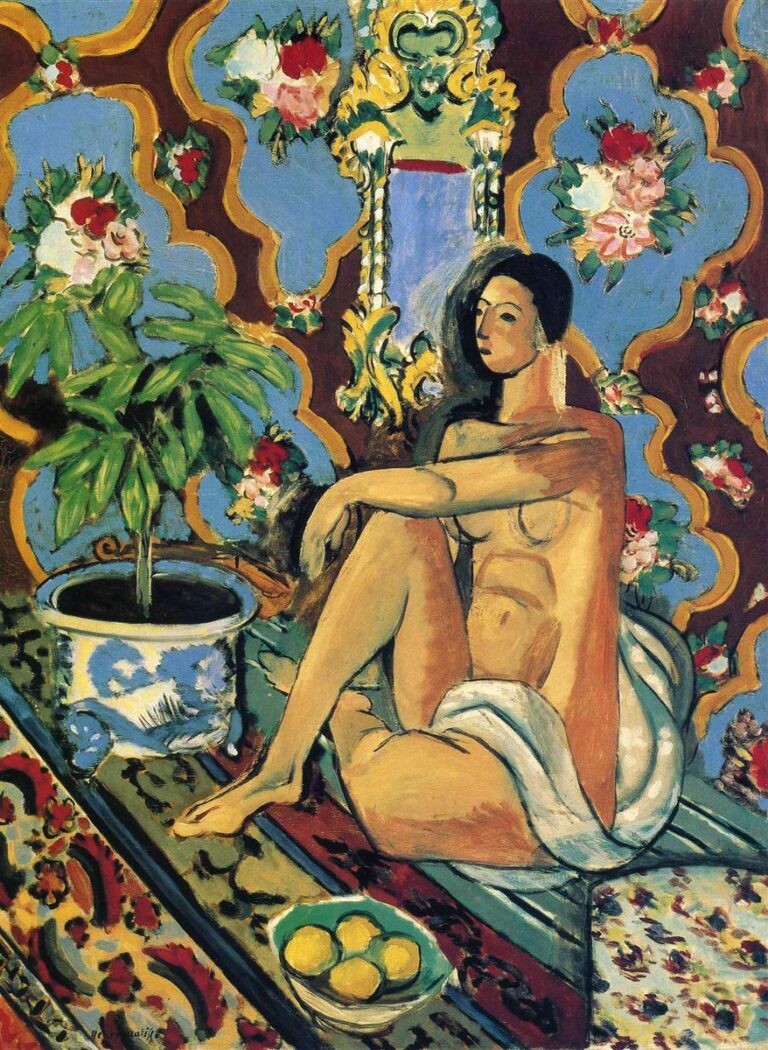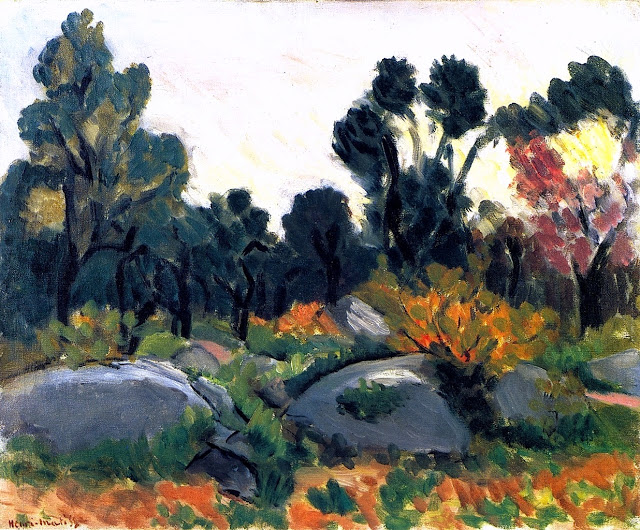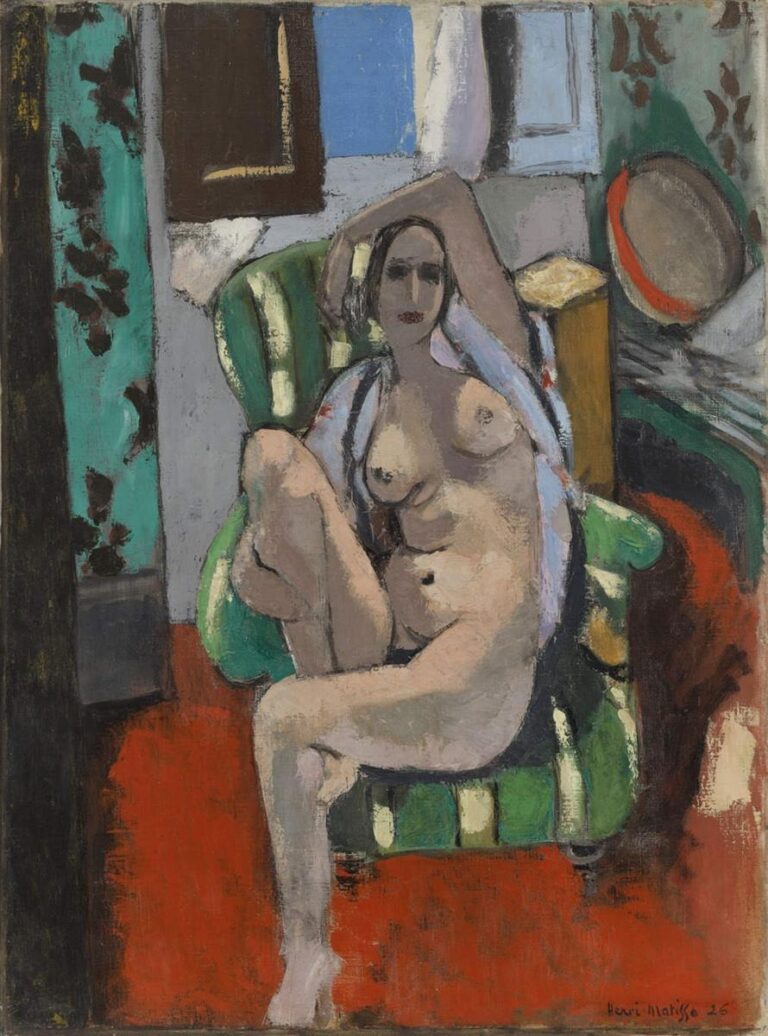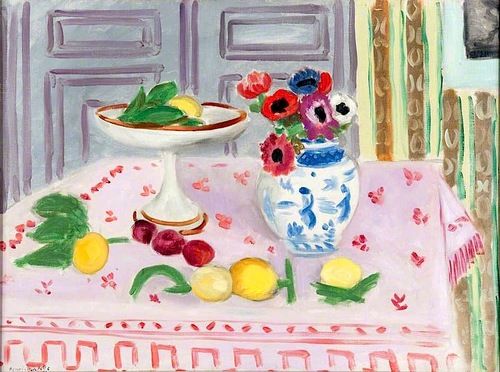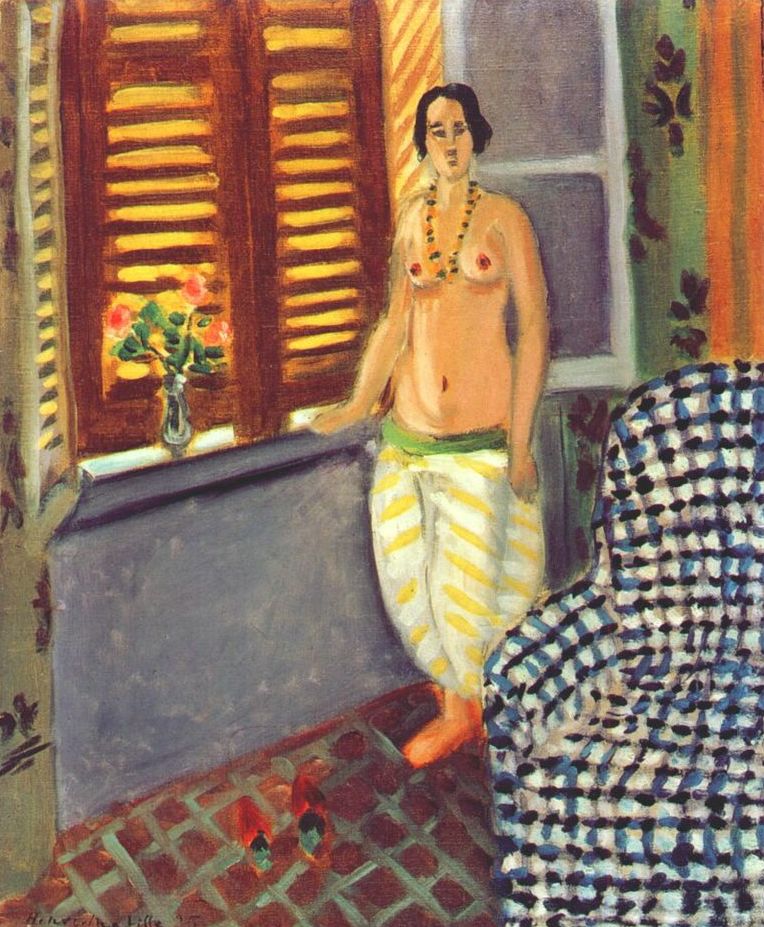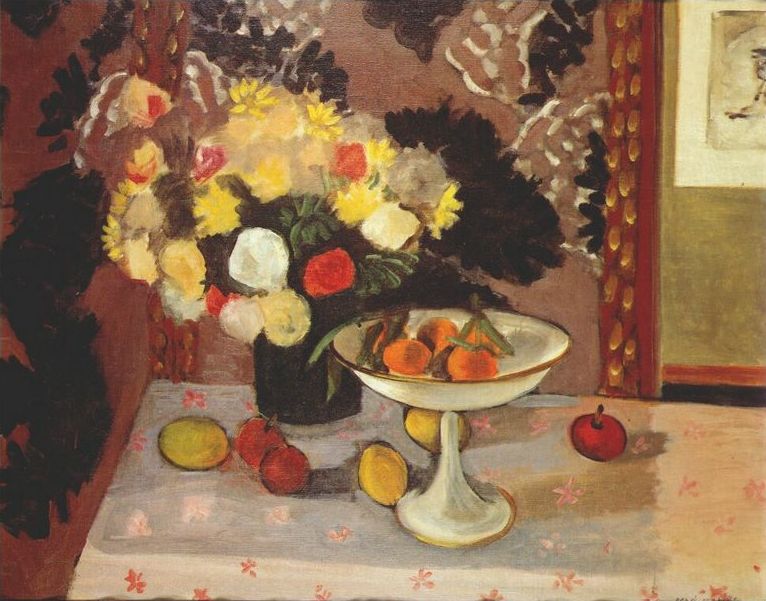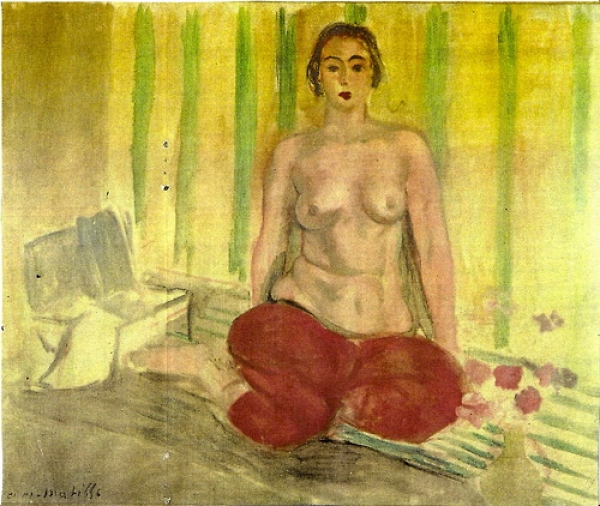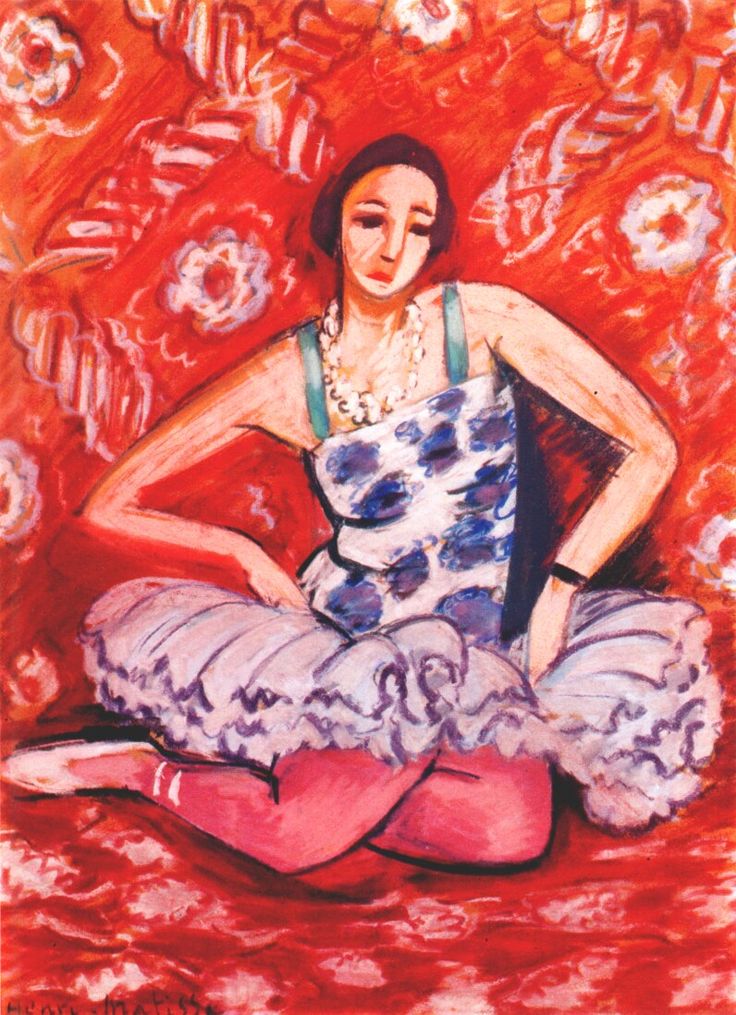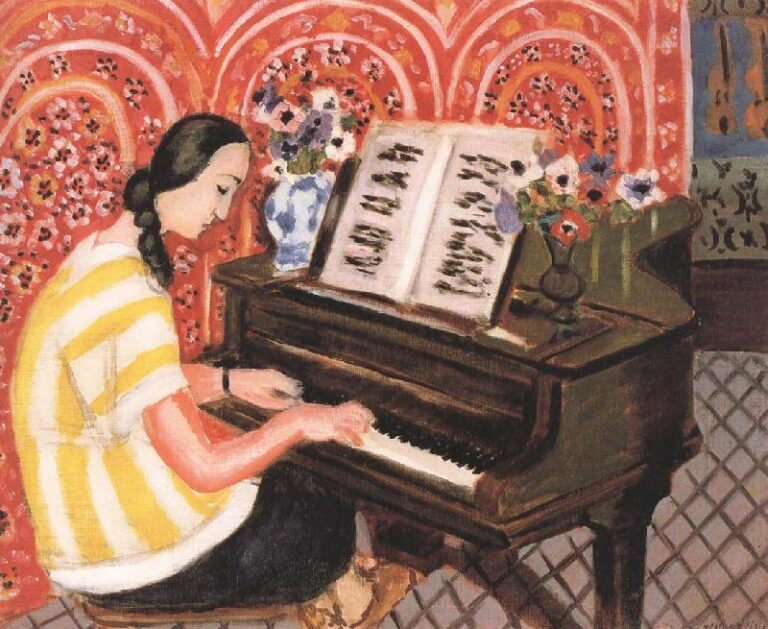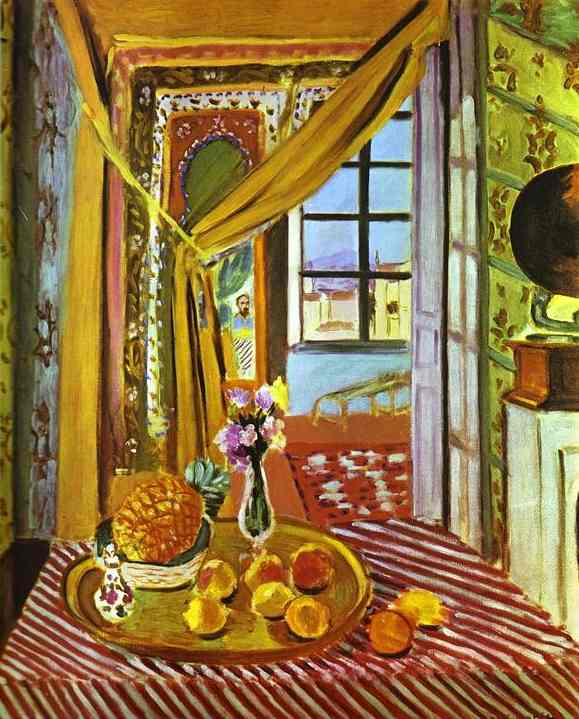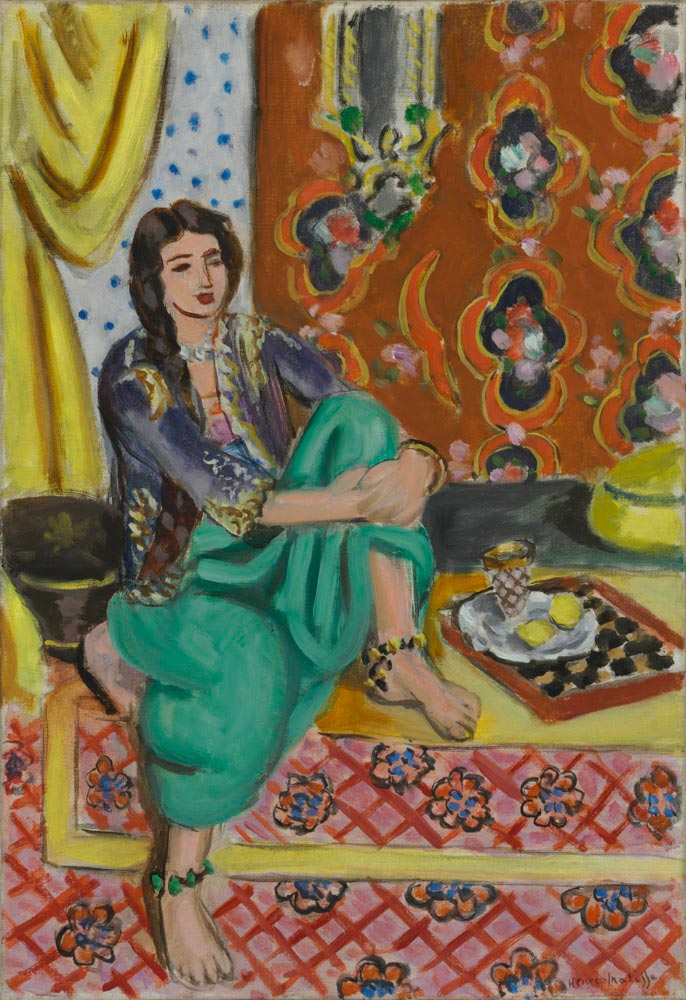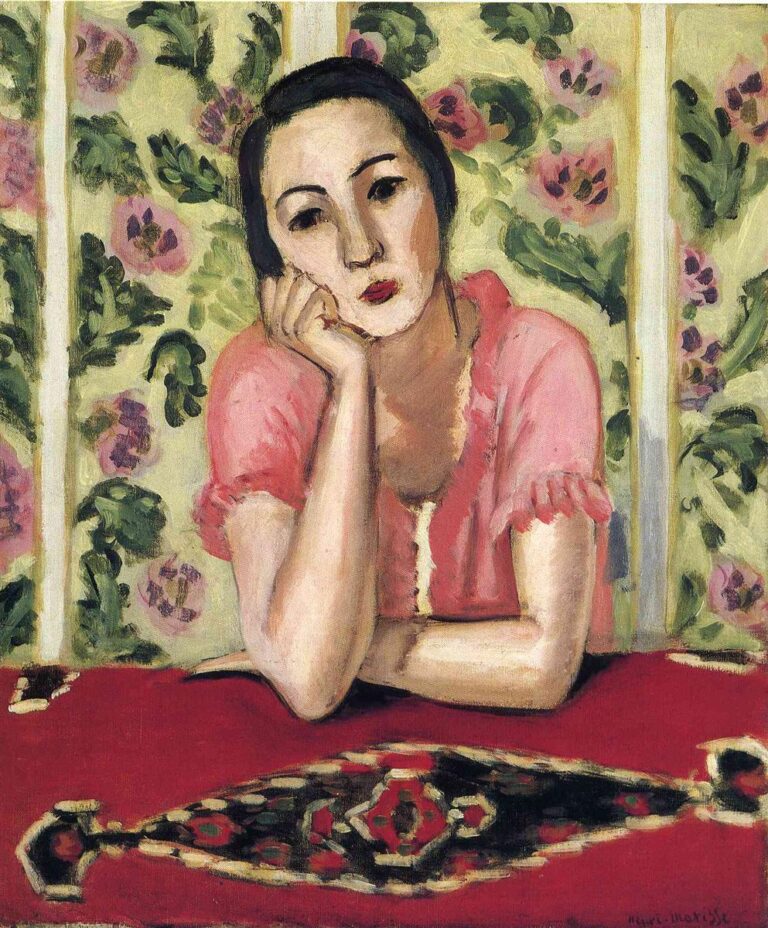A Complete Analysis of “Still Life, Pineapples, Fruit Bowl, Fruit, Vase of Anemones” by Henri Matisse
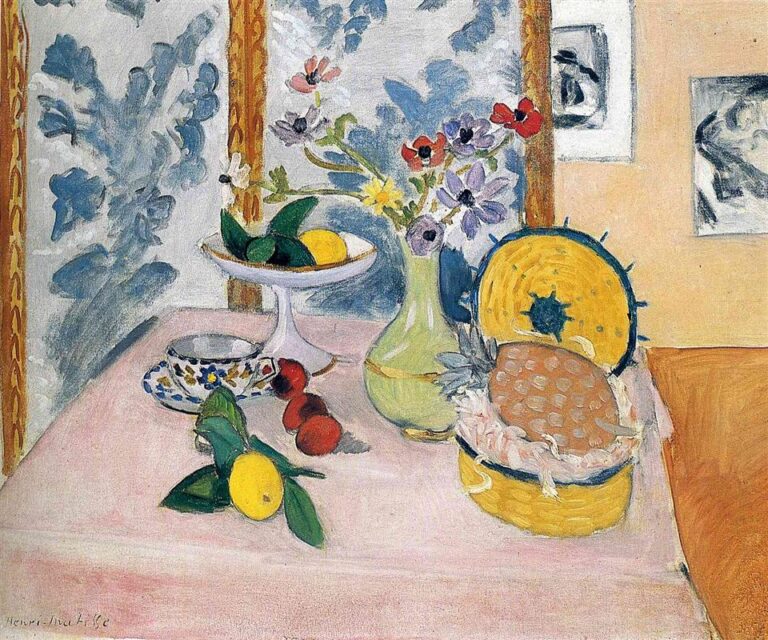
Matisse turns a rose-clothed table into a poised theater: a halved pineapple in a yellow basket, a white compotier of fruit, and a glass vase of anemones set before blue foliage panels and a warm studio wall, all tuned into a calm, modern harmony of color, contour, and rhythm.


